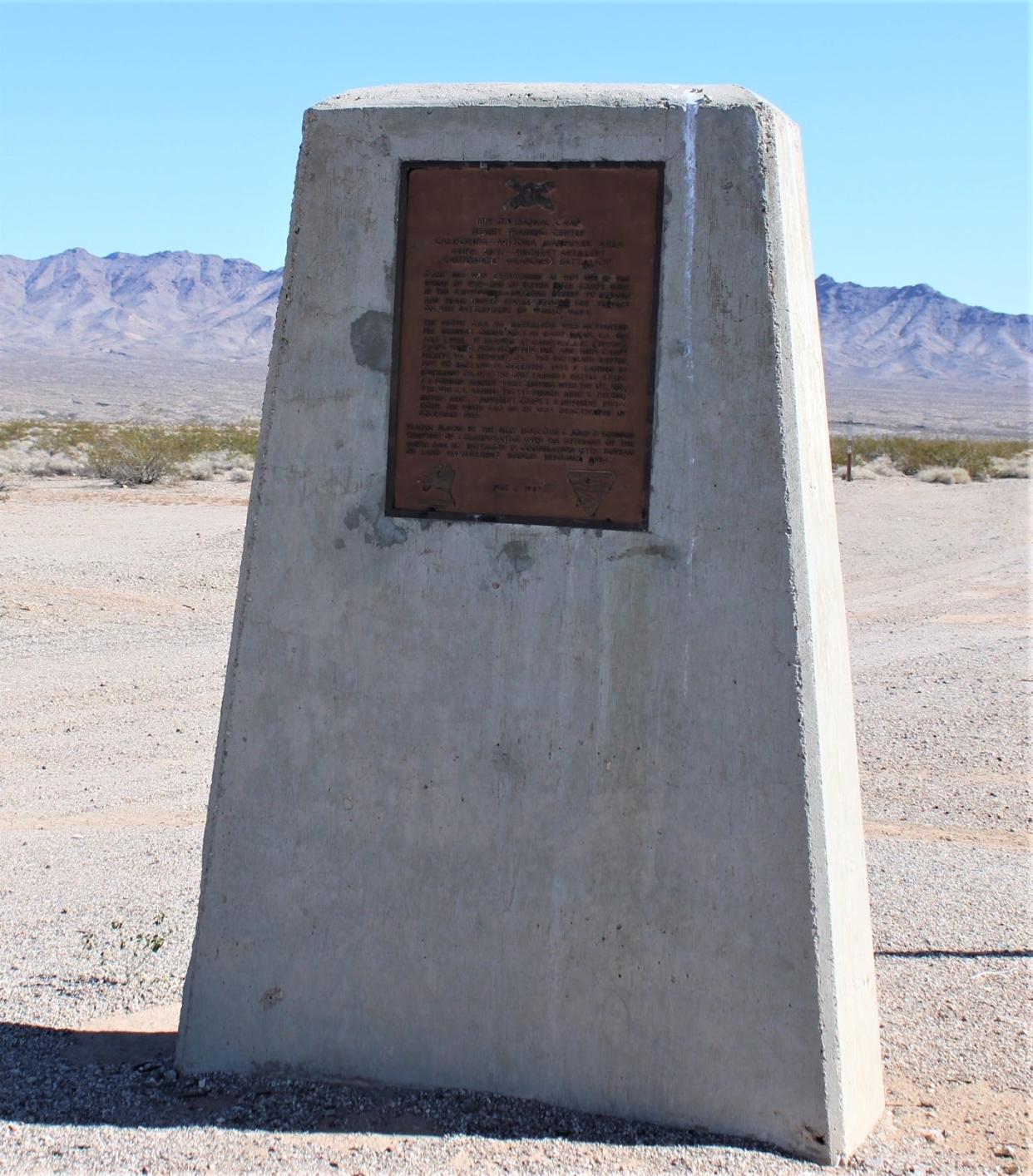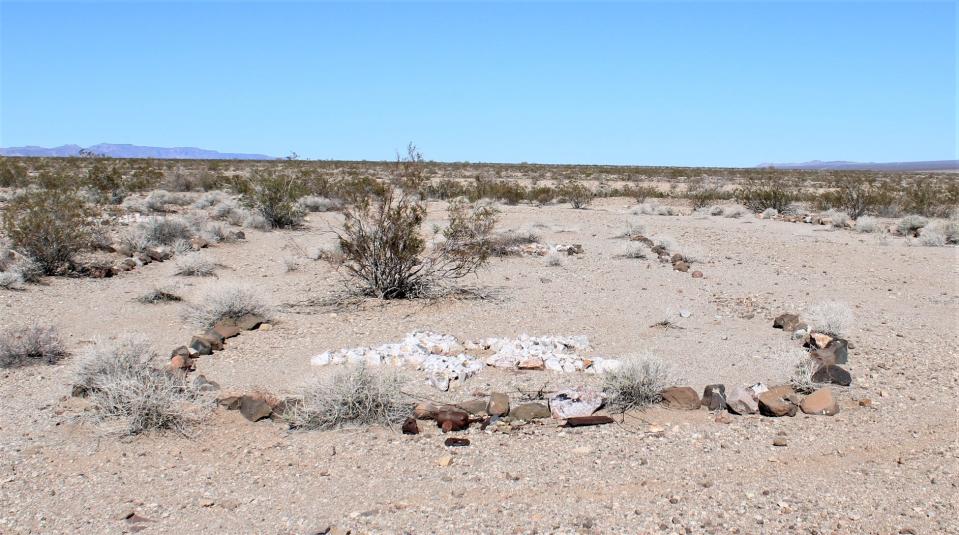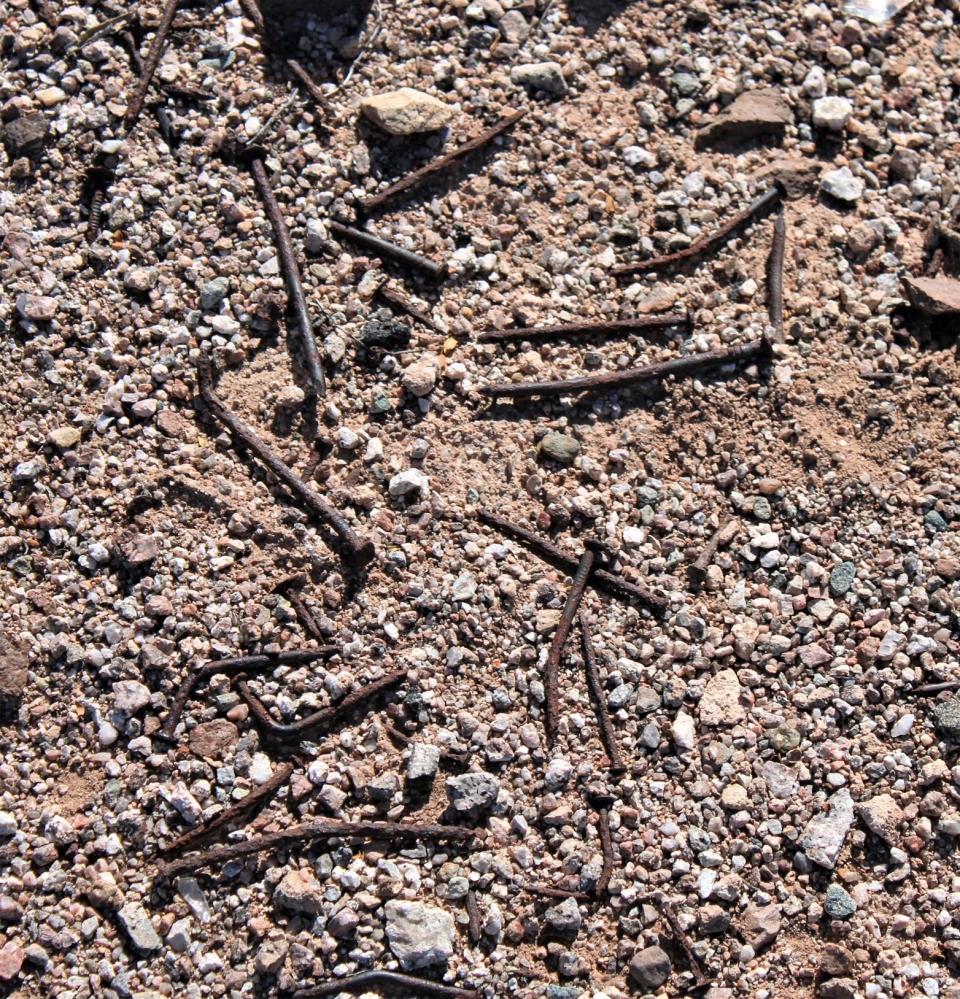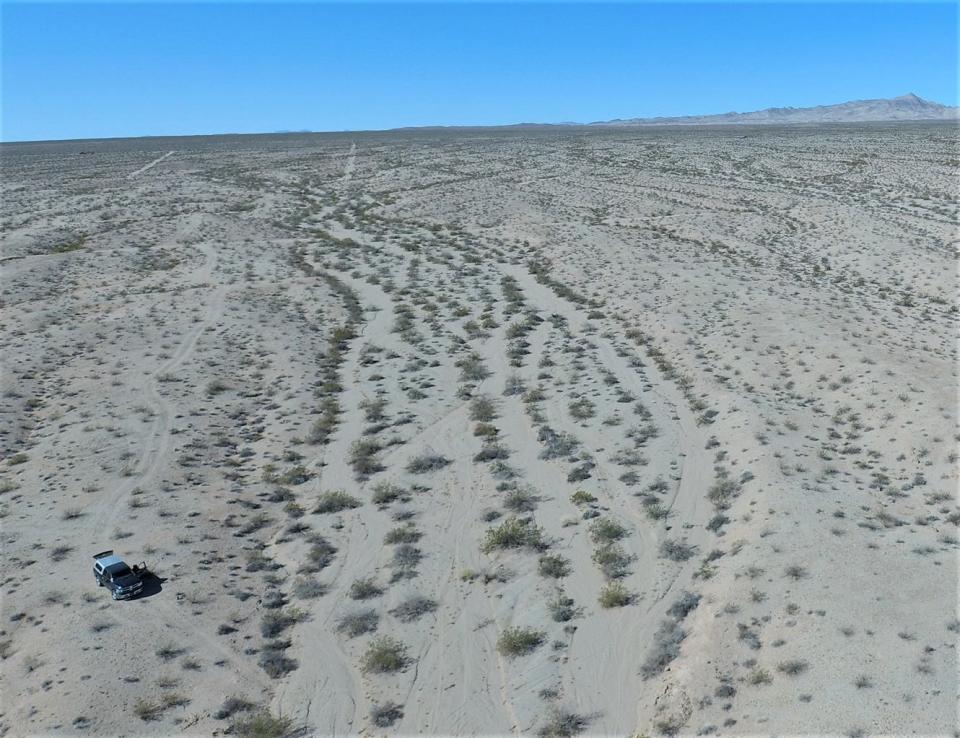A visit to Camp Ibis makes you reflect about sacrifices of World War II

- Oops!Something went wrong.Please try again later.
In August of 1943, Lieutenant General George S. Patton reportedly slapped two soldiers during the Sicily Campaign during World War II.
The battle for Italy was brutal and tough, but so was Patton. While visiting a medical hospital for the wounded, two soldiers were suffering from what was then referred to as ‘stress’ or ‘shell shock.’
With all due respect, not much was known at that time about PTSD, Post Traumatic Stress Disorder.
By today’s standards, Patton certainly did not react appropriately.
“I’ll slap that stress out of you,” he said (I am paraphrasing) during the encounters on Aug, 3 and 10, respectively.
Now, we understand fully when a soldier, a police officer, a fireman, or any first responder sees things that they never imagined seeing in their lifetime, it can and may affect that person negatively psychologically.
The other day, I witnessed a young man yelling at a barista working at Starbucks about an order that went wrong.
“I ordered a grande iced caramel macchiato with two pumps of vanilla syrup, two pumps of hazelnut syrup, a shot of espresso, whipped cream, and a caramel drizzle.”
“Yes,” the barista replied in a very cool Italian accent.
“I can tell you only pumped one vanilla syrup into my drink,” he stated. “I am so stressed out.”
The barista nodded, reached across the counter, and gave the customer a good slap across the chops.
We applauded, and the customer left.
Of course, that was total fiction. I would never condone violence against an ingrate over a dollop of vanilla. Never.

General Patton and the desert camps
The United States Army had told Patton in February of 1942 that he needed to create desert camps in the desert. These installations were required to simulate what he and his troops might experience as they went after the German Army in North Africa, led by the ‘Desert Fox.’
That would be Field Marshal Erwin Rommel, not me —though my lovely wife, Laureen, often calls me that poolside during the summer months.
Might have been the margaritas talking.
Plans were drawn up, locations scouted, temperatures checked, and all the rest needed to ensure the soldiers and commanders knew what they may be getting into when entering the war in North Africa.
“General Patton, we have the most realistic settings in mind for the five camps the Army has requested,” a Major may have stated.
Slap!
“The eight camps.”
Slap!
“Ten.”
Slap!
“Okay, General Patton,” slurred the Major, “how aboutssss twelfths?”
No actual record of this fictional conversation exists, but I think it adds flavor to the story.
However, twelve Army camps were set up throughout the Mojave and Sonoran Deserts for training. Tank crews and ordinary soldiers would be sent to the desert who needed to understand the complexities of fighting in such inhospitable conditions. It was a wake-up call for those who may have to battle the enemy in a land most of them had never seen or even imagined.
“I understand that there is nothing but desert,” Joey from Queens may have said to his buddy, Jesse, from Brooklyn.
“What’s a desert?”
General Patton said, “the desert is a killer, and we must acclimate our soldiers to the climate.”
The general was correct. The desert can be brutal during certain months of the year and tends to get hotter, with bullets and tank shells cascading.
It was a brilliant plan, and thus twelve desert camps were set up at various locations across the vast stretches of desert.
I previously wrote about this when I visited the General Patton Memorial Museum at Chiriaco Summit off Interstate 10.
But I have never visited one of the actual training sites.
Shame on me.

A visit to an important part of WWII history
Having driven past the historical site of the Ibis military camp along Highway 95 for years, I felt it was time to stop and see if there was anything more to see.
Research on the internet advised me there wasn’t much to look at across the nearly 11,000 acres of the desert where this camp was initially located.
That did not bother me much. In many of my travels, I have visited locales devoid of humans with only a touch of what they had built or left behind.
Simple slabs of cement, a timber here or there, a post that may have held a sign at one time, a rusting relic of a car or truck that someone once operated with pride.
I was not expecting much as I left the paved highway of 95 and headed east toward the ‘Dead Mountains.’
And I was correct.
A cement and rock memorial indicates that during World War II, tent cities had been set up for thousands of Army soldiers to reside in the harshest element imaginable. To exist in an area where they were soon shipped out from, not knowing if or when they may return to their homeland.
This was Camp Ibis.
When visiting deserted towns, ghost towns, and places no longer marked on maps, I can almost sense the townsfolk still there.
I am unlike Laureen, who I believe has a gift for sensing the energy of those who may have occupied the locales we visit.
“Do you feel that?” she may ask, knowing the only thing I am feeling is my stomach growling for lunch.

A sense of history can still be felt at Camp Ibis
Today was different. I was alone and could feel something about the time. No matter how short, these brave young men had occupied this place in the desert.
Stopping my truck a dozen times to listen to the silence of the desert, it seemed as though I might be far-reaching for this mystical venture, but then one brake pedal later … a swirl of wind swept across the vastness of the valley sending a giant dust devil right across the hood of my truck.
There had been no wind two seconds prior, and suddenly my Dodge Ram was getting sand pitted.
I climbed out of the cab, and nothing – not a breeze.
That is the way of the desert, though.
I continued across the dirt roads, looking for a personal connection with Camp Ibis. I wanted to feel what it was like for those young men who had ventured out into the hinterlands to practice what it would be like to face the foe in combat.
The ‘Greatest Generation’ fighting against the ideology of fascism and defeating it.
My father was part of that generation.
He was an Air Force gunner on a B-24 who rarely spoke of the war. Sure, he’d share funny anecdotes of when he and other fliers had imbibed a little too much at a nearby pub.
“That’s how we forgot what we’d seen that day,” my father told me.
I knew he would never forget those images, and I never asked him further.
The Greatest Generation.
I spent hours driving across hard-packed roads, sandy river bottoms, and bumpy ravines, trying to imagine what it may have been like for young men who had promised to serve their country against outside aggressors.
No answer was easy for me to come up with — except the love of country.
The weather was perfect for sending the drone up into the skies and seeing what I could see from a bird’s eye level.
It soared above into the clear blue heavens.

Signs of civilization can be hard to come by
The camp had been named after the Ibis railroad siding in Piute Valley, which I was standing near. Ibis Valley stretches for forty-five miles from just outside of Needles to Searchlight.
From my vantage point, all the drone was picking up were vast stretches of the baked desert floor. There were no tell-tale signs that any civilization had ever been at this location in the past.
I could scope in on no ruins or structures of any type. Of course, the camp was closed in March of 1944, so the idea of anything still visible was remote.
The camp had consisted almost entirely of tents for the soldiers and mess halls, showers, and restrooms.
I did hope not to fall into one of those, even after 79 years.
After flying for nearly an hour, I landed the craft and wandered.
Rusty nails covered certain areas where I treaded, and an old gas can that may have been from the correct period were the only signs of a past life I came across.
Standing and looking east toward the Dead Mountain range, I felt nostalgic thinking of those thousands of young folks training in this wilderness.
What was going on in their heads? Did they believe they would ever see their families again? Or did they simply wonder ‘why?’
I hoped they all returned safe and sound, but I knew they hadn’t.
That is the way of war.
Withdrawing a folding chair from my truck, I sat in the sun and scanned the horizon.
“Thank you,” I muttered, hoping someone from the past heard it.
John can be contacted at, beyersbyways@gmail.com
This article originally appeared on Victorville Daily Press: Camp Ibis is a must-see spot for anyone interested in WWII history

